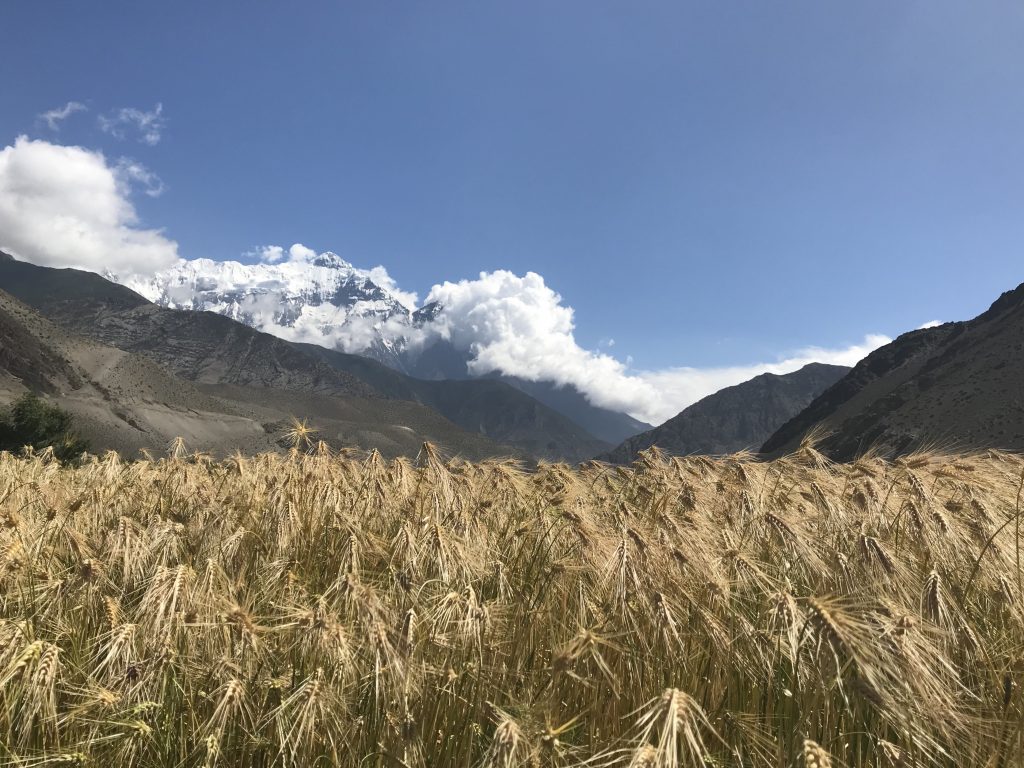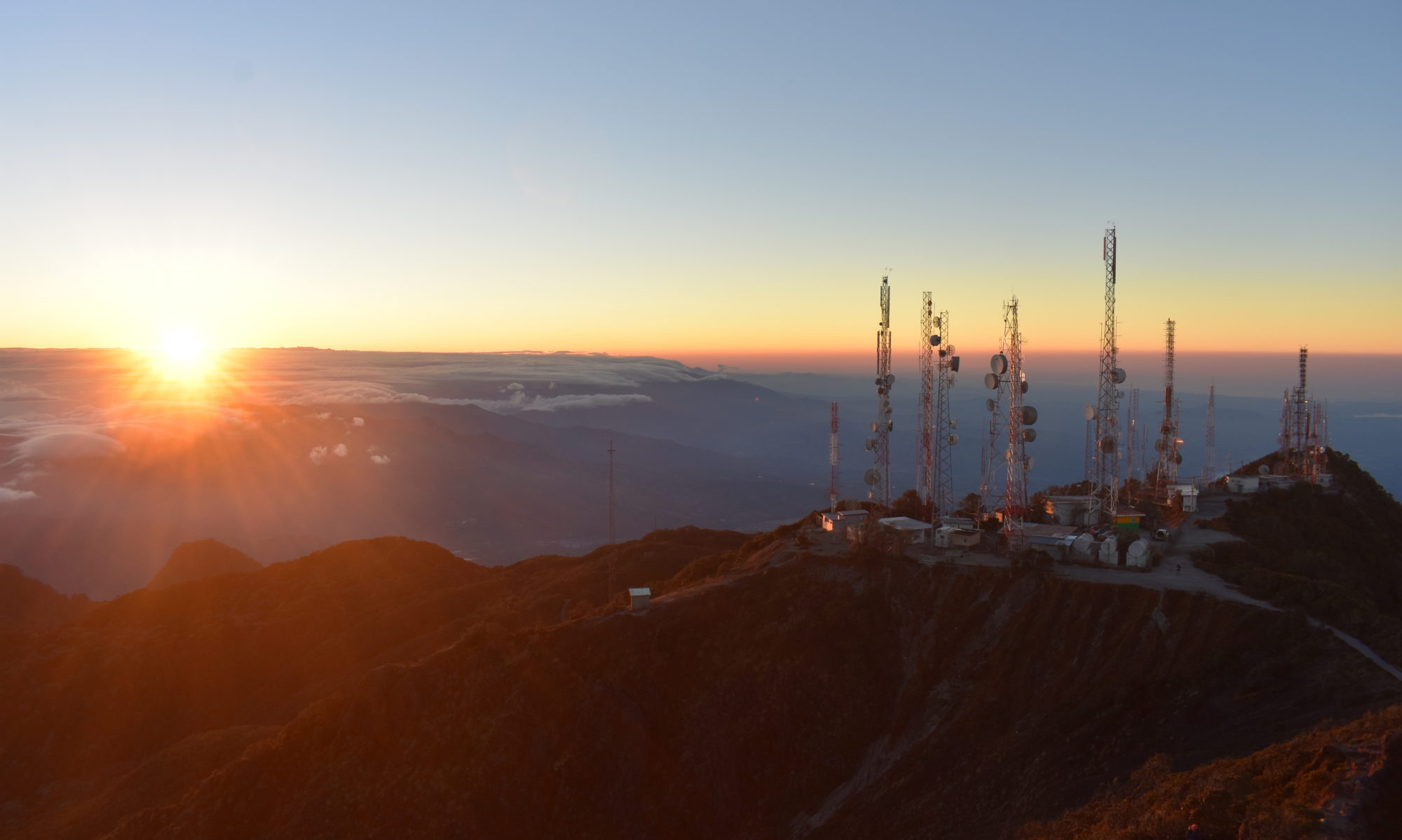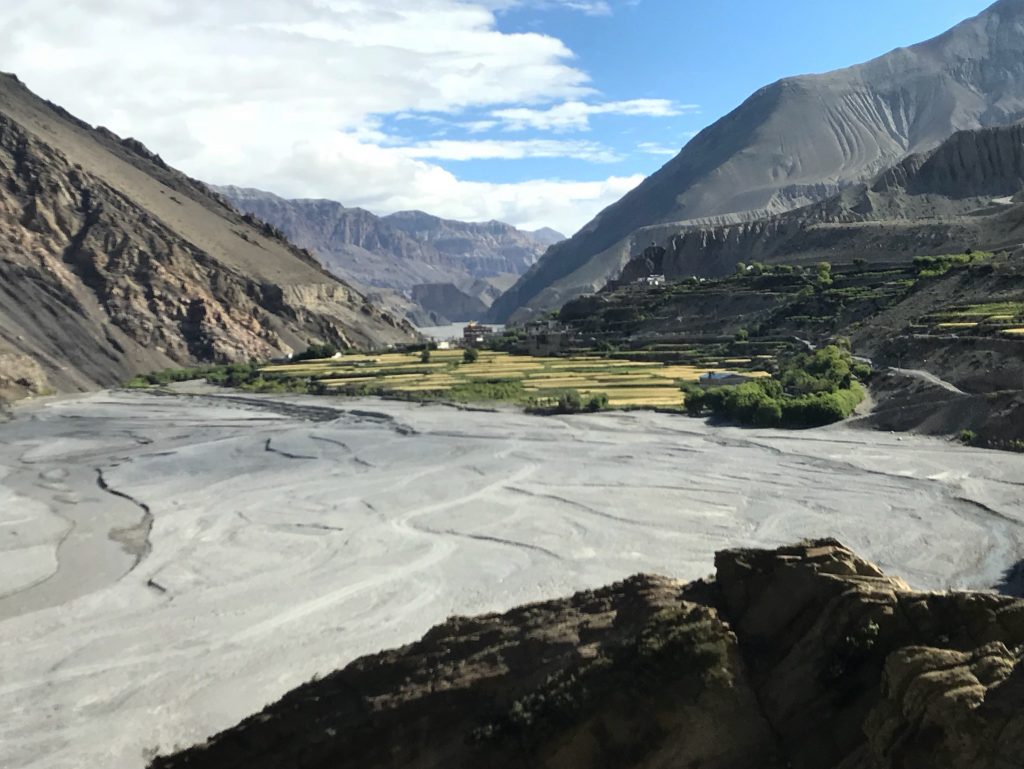
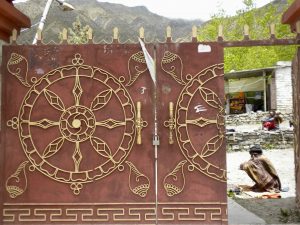
Similar to its position on the pilgrimage route, Kagbeni lies along two popular trekking routes, mostly used by foreigners. Budget trekkers and adventure seekers walk the Annapurna Circuit, starting in the valley of Manang and crossing over the Thorong La Pass (17,769 ft) to descend into the valley of Mustang, where Kagbeni lies. Trekkers with more money may opt to head north into Upper Mustang, the restricted area of which Kagbeni is the gateway (much like it was the gateway for trade in the past). Upper Mustang has a distinctly different landscape and culture than Lower Mustang, and so the number of tourists who can enter is limited by who can pay the high price of the permit.
At this point, I have been living in Kagbeni for about a week and a half. I see a few trekkers walk around town each day, even though it is the off-season, and busses of pilgrims passing through on the way up to Muktinath. Wait. Busses?
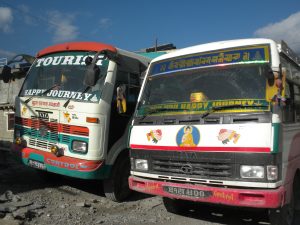
That’s right, the Nepali government built a road through Mustang around 15 years ago, and has since been expanding and improving it. This road is meant to connect India and China for easier trade, but it also makes it easier for people to reach places like Muktinath without stopping as much along the way. Thus, bus loads full of pilgrims arrive in town for maybe an hour or two to rest and grab a bite to eat or see the town, and then they immediately head off to the site, without spending the night here in Kagbeni, or in the other smaller towns further up the mountain.
The road has also had an impact on trekking in the area. No one really wants to walk for a long time along a dusty dirt road in an area known for its wind, so more and more people opt to hire a Jeep and driver in addition to a local guide, thus skipping many towns that they may have once spent more time in.
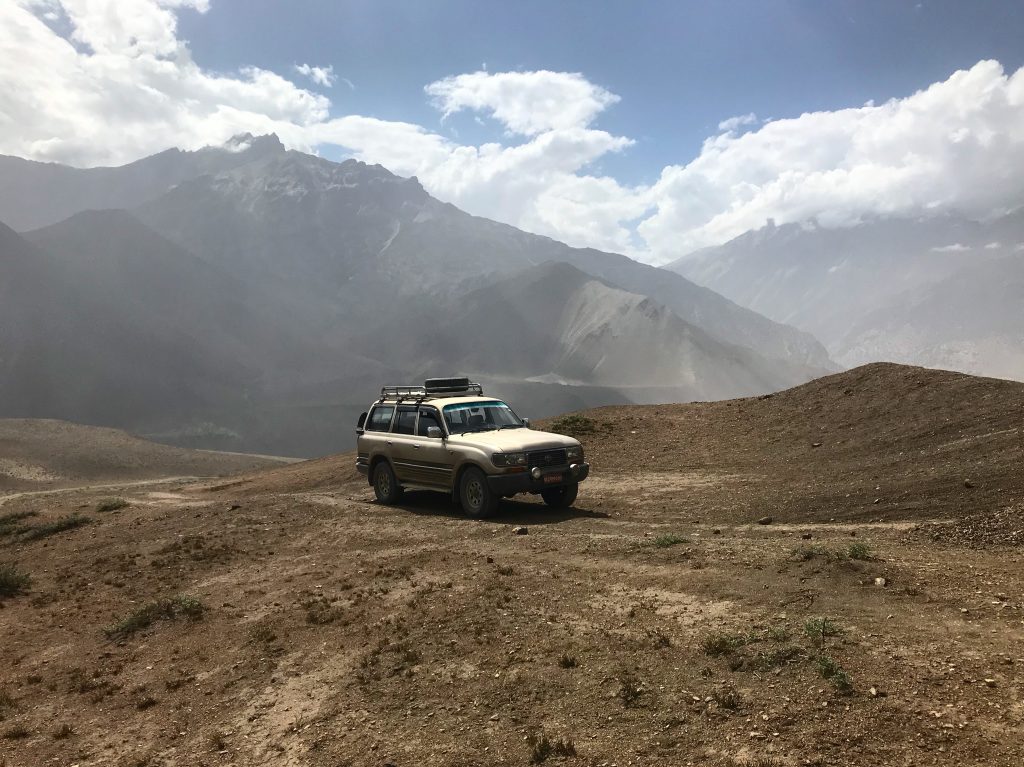
So all of these forces (the pilgrims, the trekkers, the wind, the road, the narrowness of this spot) have come together to change the way that Kagbeni interacts with tourism. Even on the Annapurna circuit, many people now walk from Muktinath directly to Jomsom (the next larger town down river and where the small airport is located), quickly wandering around Kagbeni before moving on.
The people who live here all comment on this, saying that the road is good and bad, but that it has ruined trekking in the area.
Meanwhile, I still run into a few of these said trekkers each day. And because they see me and think “Wow! Another white person!” they decide to come over to me and engage me in conversation. Which at times I love, I’ve met some pretty cool people just through randomly starting up a conversation with them. But other times… let’s just say that at times the trekkers make me want to bang my head against a wall.
Of course, there was one woman in particular who made me feel this way. I was sitting in the courtyard of the monastery where I teach, enjoying
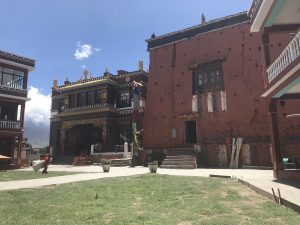
the quiet of our lunch break, when most of the kids also choose to go inside and rest for a bit (they’ve been up since 4:30 in the morning). This woman had been walking the boundary of the monastery, looking at different things, and she kept looking back over at me. I was trying my best not to make eye contact, because I was truly enjoying basking in the sun for a little while in silence.
Unfortunately, she did not seem to pick up on this, because as she finished wandering around, she made a beeline for me, sat down next to me, and started peppering me with questions about myself, the monastery, Buddhism, and Mustang. I believe her first question was “where are all the children?” To which I said “It’s their lunch and rest break right now, so they’re all inside resting at the moment.”
Apparently this was not a good enough answer, because she continued to aggressively pull as many details from me as she could, at times being very combative about my answers. At one point, the conversation moved to what she was doing here, and it came out that she was trekking the Annapurna Circuit and was spending the night in Kagbeni. The day before, I had met another solo woman doing the same thing, and I had a wonderful conversation with her. I even took her picture on the monastery steps.
But this second solo woman had set me against her from the tone of her first question, and from her inability to see
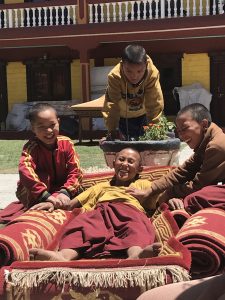
that I just wanted to sit in my own thoughts for a little while. So perhaps I am being more negative towards her than I should be, but it was really one statement that made me upset. I could handle all of the questions about the kids and religion, it was actually kind of nice to stretch my brain and remember all of the things I have learned. I could handle talking to her even though I didn’t want to, because I know what it is like to be traveling alone. But I could not handle her complaining about having to pay 200 Nepali Rupees (the equivalent of about $2) to spend the night in Kagbeni.
Why was she complaining about spending $2 on a hotel room? Well, apparently many of the lodges on the Manang side of the circuit are free for the evening. In reality, I believe that what you pay for dinner and breakfast includes the fee for your room, but this is not the impression that this woman had.
So, trying to understand her situation more, I asked why it was such a big deal to pay $2 for a night. And this is where she said “well, I’m used to getting things for free.”
This statement is really what made me dislike our entire interaction, and I was extremely happy when the bell signaling the end of lunch rang a short time later.
I understand that many solo travelers (or even those traveling in pairs) have quit their jobs to travel the world, and do so on a budget. This woman, for example, said that she had been traveling for
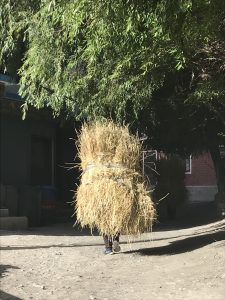
three years since quitting her job. I do not believe, however, that this makes people entitled to complain when they do happen to have to pay slightly more than they might have in other places. As I kept trying to explain to her, Mustang is different from Manang. It has a different relationship with trekking and pilgrims, and there are many many reasons why people may charge higher prices or charge in different ways. And yes, you are traveling and want to have a good experience, but the people who live here need to make a living somehow. Not everyone has the privilege of being able to quit their job and travel the world.
Many people travel to South Asia because they know it is cheap, but then they complain about it not being cheap enough. If you are a traveler, especially in a country known for its low budget, I would ask that you please think about the person that you are paying for their services. Just try to remember that not everything is about you, and that people are not automatically trying to cheat you just because one town might have higher prices than another where you have already been.
